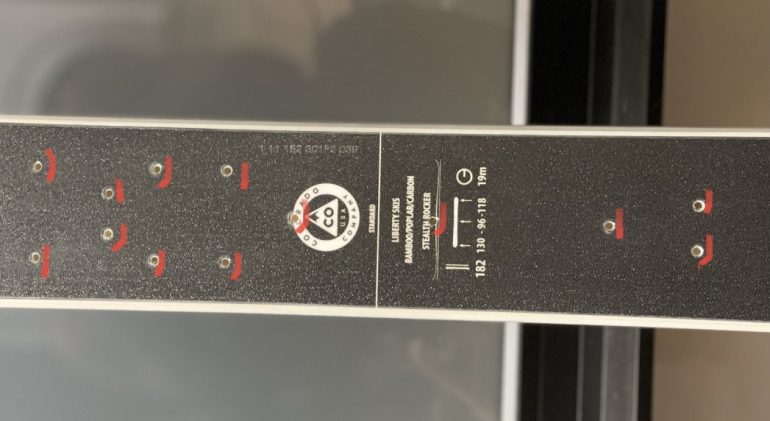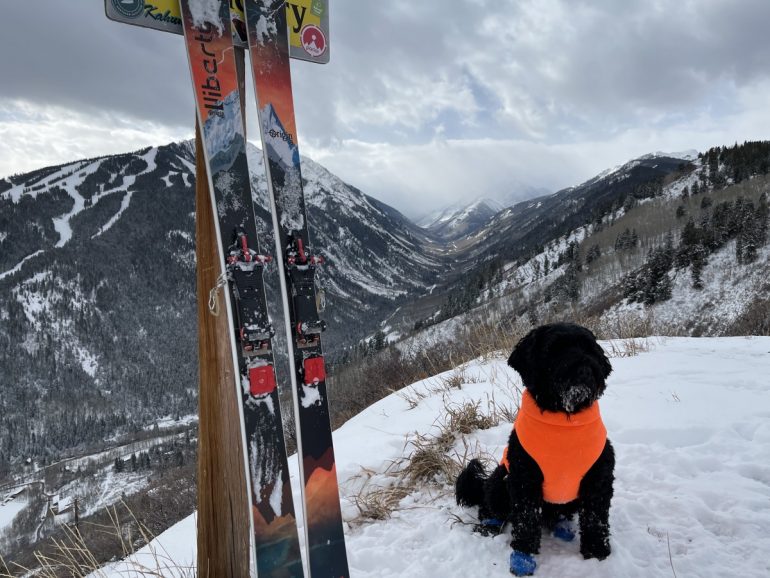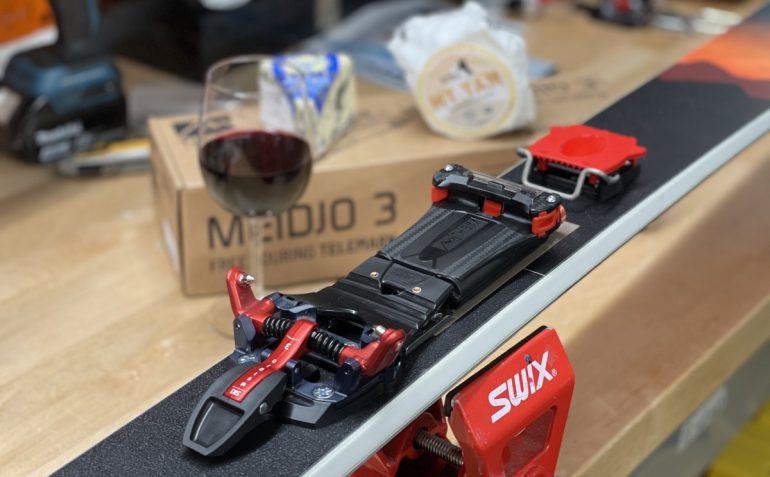
The Meidjo 3.0 Features the finest in French engineering, including environmentally friendly Pebax material (which has been proven in Scarpa boots for years), paper packaging, and an optional Alpine Heel piece (not pictured).
Written by Nick Cherney
Innovation in telemark gear is being driven primarily on the binding side of the equation, with numerous small independent companies in the game: 22 Designs, Voile, Bishop, Moonlight, and increasingly, Meidjo. As I discussed in my article here, backcountry telemark will slowly die without new lighter gear that can compete with AT equipment on the uphill. But telemark skiers are all cheap and proficient with duct tape, which has stifled product development. They are also generally more attractive and interesting than alpine skiers, but that is a different article.
The French are Coming
The Meidjo 3.0 telemark binding is probably the most radically different binding to be developed in the last decade in terms of the mechanics of its operation. Some of that is excellent, some of it can be problematic. The good news is that as much as the 2.0 was a leap forward from the 1.0, the new Meidjo 3.0 addresses many of the complaints about earlier models, and it feels like the binding is starting to settle into its own. Today the Meidjo 3.0 can be summed up in four major statements:
1. The lightest telemark touring binding on the market, comparable to an midweight AT binding, at 910 grams (2 lbs) for a large pair. This obviously does not include three-pin bindings, which are lighter, but are rightly classified as Nordic equipment.
2. In its stiffest settings it can be skied as hard as any other binding on the market, holding up surprisingly well in big mountain terrain and to large impacts, while featuring a fully adjustable lateral release that actually works.
3. It is the only telemark binding which allows you to lock your heel down and ski alpine (with the optional alpine heel attachment). I don’t know why anyone wants a tele binding that can alpine, but I suspect it’s a major selling point for many prospective buyers.
4. It is the most expensive and complex telemark binding on the market. At $580, it is $80 more than its closest competitor, the 22 Designs Lynx (read our full product review here), and almost $200 more than the 22 Designs Axl binding.
Start with your boots
No, this is not a boot review. But in my opinion the strongest argument for NTN over 75MM is the uphill performance of the tech toe which, combined with its class leading weight, gives the Meidjo 3.0 excellent touring potential.
Unfortunately, there are currently only four NTN boots with a tech toe insert, none of which are particularly light. Even with a fairly heavy touring ski, your boots will be close to HALF of your total gear weight. The Scarpa TX Pro weighs 40% more than the Scarpa F1 AT boot for the same price.
Beyond weight though, your perception of telemark binding performance is going to be very heavily influenced by your boot. If you go from a Scarpa T2 to Crispi EVO World Cup, the boot change is going to make a much bigger difference to how your gear feels than the shift from your Hammerheads to a Meidjo 3.0 binding. Bear this in mind when gathering people’s opinions of one binding versus another.
Don’t ask your ski tech their opinion
Probably the most obvious criticism of the Meidjo 3.0 binding is the complexity and annoyance of mounting. Given that mounting is not a common event for most people, this isn’t really a big deal, but there is something to be said for simplicity.
More importantly, a real criticism is the 13 holes you need to put into the ski (plus another two for the alpine heel). I don’t know of any ski failures as a result of all these holes, but it seems a bit overkill. Particularly three for the heel piece (seven if you add the alpine heel) and the two which serve only to hold down the “touring plate” which is just something for the “spring lever” to flex off, as well as holding the tiny little metal piece you need to engage for touring (see photo). The recent release of a new heel piece will enable you to eliminate the touring plate and spring lever if you trust the step-in and don’t mind not being able to go fully flat to ski while touring (see below for details).
It’s light, but how does it tour?
The real distinction of the Meidjo 3.0 binding is its tech toe/weight which is best in class. If you have never gone uphill in a tech toe, it is a revelation, and the Meidjo 3.0 does a great job. The leap is as significant as the first free pivot bindings in telemark which meant no more flexing the bellows of your boot to get uphill. Of course the full benefit of the tech toe will not be realized until we have a lighter telemark boot with real uphill flexion in the cuff.
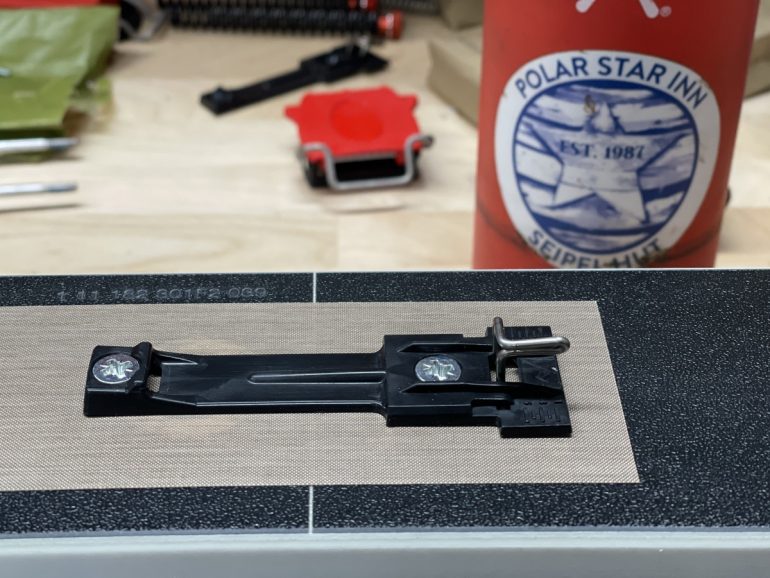
The “touring Plate” necessitates two extra holes. Note also the metal latch which is engaged by a (generally ungloved) hand for touring mode
If one wants to complain, the issues are just in the efficiency of transitions. To move to touring mode you must lift the spring box (which engages the spring lever), then push it down again so you can flip the small metal latch which keeps the entire assembly down on the ski while touring. This all sounds more complicated than it is, and if you are someone who takes a relaxed approach to your uphilling, you wont probably notice any of it other than the fact that engaging the metal latch is quite fiddly, requiring you to remove any thick gloves. Again, the new heel piece will eliminate this issue in most conditions
Going from hike back to ski is a simpler process: You simply flip the lever and, in an improvement from prior models, the Meidjo 3.0 allows you to step in (the 2.0 and 2.1 can also be upgraded). This true “step-in” feature largely worked as advertised, though at times it is hard to engage and you will have to revert to manually lifting the spring box. Another complaint people raise is ice up under the spring box. While breaking trail in heavy wet snow this certainly was a factor, however I don’t think it performs significantly worse than other bindings in this regard. The anti-ice tape provided with the bindings (see photo) definitely helps.
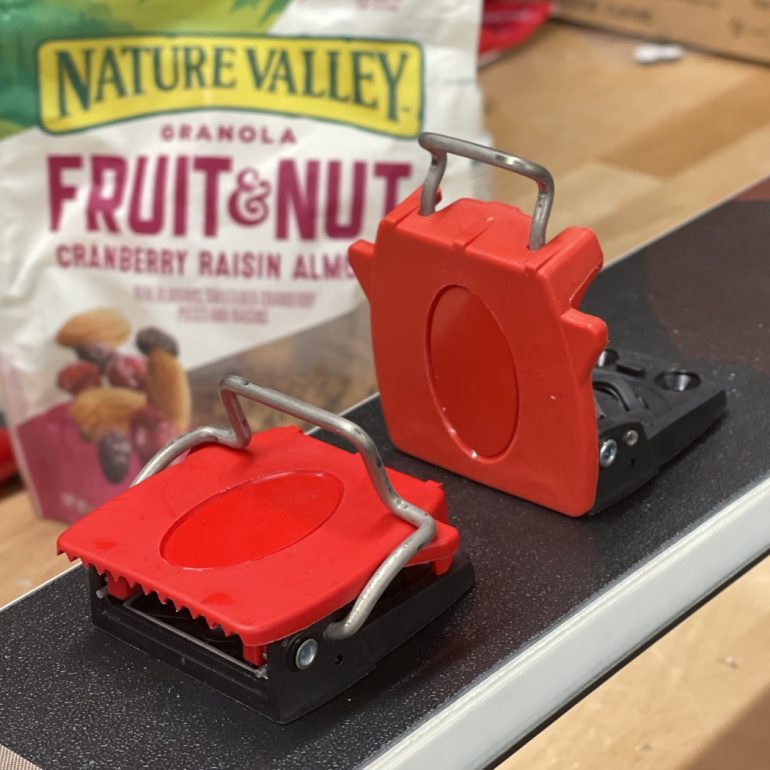
The standard heel piece on the right, the new one on the left. The new design for the metal second heel is far more stable, but is lower than the red, whereas the original metal heel is higher than the red, but unstable.
The red plastic heel on the Meidjo 3.0 easily engages with a ski pole and feels solid, though the metal piece for higher lift is not stable and frequently collapses. The just-released upgrade to this system is a substantial improvement, retaining the same plastic piece, but replacing the metal second heel with one that pivots towards the back and is far more stable. The advantage of this lower metal lift (about 3/4 inch) is that it keeps your boot just above the spring box, meaning you don’t have to manually lock down for touring. Unless you are on a long flat stretch, it feels quite comfortable. In a well articulated boot, the red should be plenty high for all conditions. In a stiff boot, you may wish for a higher lift.
OK fine, but can it ski?
Yes. I prefer to ski a very stiff setup in the resort, usually a 22 Designs Vice with stiffy springs, slick pin in the most active setting, and a pair of T1’s with an intuition power wrap plus liner and a booster strap. The Meidjo 3.0 can ski like that. It also can be dialed way back to ski a soft boot, knee to ski, and is fully compatible with a lurk, or your favorite grateful dead tour shirt from the 70’s.
For those who are still skiing older generation bindings, what the Meidjo 3.0 (and other modern telemark bindings) provide is lateral stiffness. Or early edge engagement. Or whatever you want to call it. What it means is that the ski is far more responsive to attempts to put it on edge. This means the ski’s action on the snow behaves as it should, with quickly arcing engagement from one edge to the other. This feels different than skiing on Nordic gear (which is what older telemark bindings really are). It feels better. And it allows for much more control in high speed or steep conditions. Improvements in lateral rigidity are incredibly important, and the Meidjo 3.0 delivers.
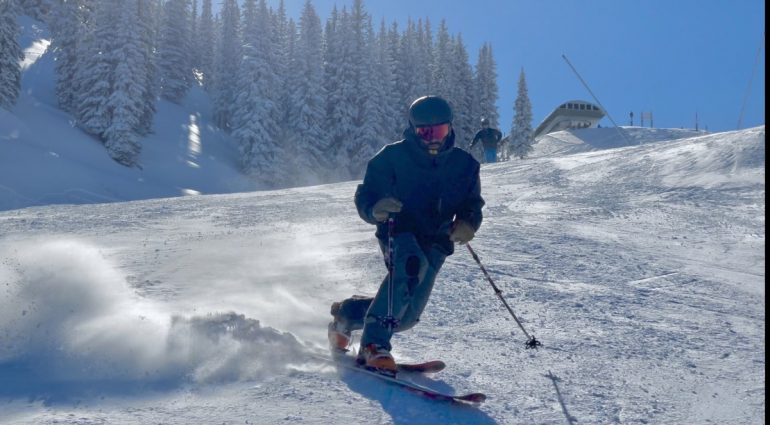
NTN as a system promotes a more vertical stance, but with the right gear it also allows plenty of soul telemark, with a little edge control.
Spring tension and lateral release adjustments
The Meidjo 3.0 allows legitimate lateral release with full adjustability thanks to a spring which adjusts how tightly the rear claws grip the duck butt of the boot. With the amount of lateral rigidity in modern boots and bindings, the value of the release-ability has gone up significantly. The Meidjo 3.0 has four different spring tensions which they say equate to a DIN 3 to 12. Skied in the third setting (DIN 8-9) the binding released only when one would want it to, other than one release while executing stationary telemark jump turns in steep hard snow (race course conditions). Skied in the fourth position (DIN 10-12) I have never experienced a release.
The Meidjo 3.0 comes with standard black springs, additional inner springs to add stiffness, plus optional stiffer “red line” springs to replace the standard springs. This allows at least five rational combinations. The red line springs plus the inner springs provide performance that feels similar to 22 Designs Axl or Vice skied on the most active pin setting with their stiffy springs. Out of the box, I would say they are too soft for a 4 buckle boot, though others may disagree. With just the standard springs, they are probably as soft as a cable binding. So your limitation on “feel” of the binding is going to be the range of NTN boots currently available, not the binding.
Improvements since the 2.1
The Meidjo 3.0 is now at least the fourth version of the binding since the 1.0 was released six years ago. Each release has improved on the last and the 3.0 has a number of major improvements over the 2.1:
— The tech toe has been redesigned and improved. It is beefier and now uses two larger springs rather than four smaller. The new system seems more durable, is certainly more powerful, and is easier to engage.
— The plastic has been upgraded to Pebax, a significant environmental improvement, something all skiers should care about.
— The binding is overall lighter by 10 grams a pair. Pierre shows the Meidjo 3.0 at 455 grams and the Meidjo 2.1 at 460 grams per large binding . Add 37 grams for 26 screws per pair and you end up with a total weight of about 2 lbs for the set up. Which translates to less than 15% of your ski/boot /binding combo.
— Flat step in means you no longer need to lift the spring box by hand before stepping in.
— Just released: The new heel piece (see photo) is a definite improvement, allowing you to ignore the manual wire lock in most conditions, though it comes at the cost of the highest position.
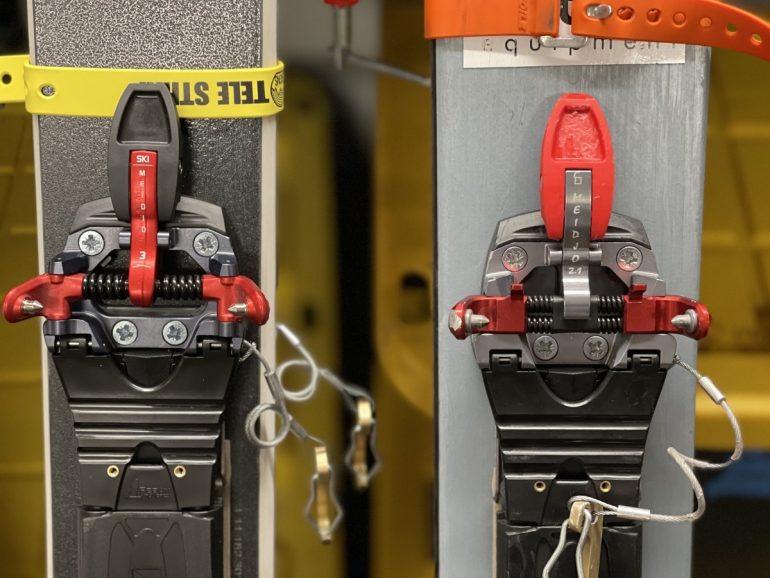
The Medjo 3.0 with its 2 spring tech toe on the left, and the Meidjo 2.1 with its 4 spring tech toe on the right. The new design is a significant improvement.
So, is it worth it?
Well, yes. Not for everyone, but if you like what you hear after reading this review, I don’t think you will be disappointed. A lot of the concerns about durability are (I think) relatively misplaced. If you are counting on those shiny new perpetually “available next year” lightweight tele boots, this seems like the right binding to pair them with. If you want the ability to alternate from tele to alpine on one ski, this is definitely the right binding. If you are just intrigued by the engineering and want to check them out, go for it. If you will only ever do resort skiing, I am not sure you will be getting all the value, and you may as well save yourself some dough and put on a 22 Designs Vice. Overall, the Meidjo 3.0 is a well designed binding that provides a lot of features many telemarkers have been looking for, and I for one promise not to engage in too much shaming if you mount the Alpine Heel.
Nick Cherney is the local televangelist of Carbondale, Colorado, has been coaching youth telemark since the 2010 season, and founded the Telemark Team of the Aspen Valley Ski and Snowboard Club in 2014. He can often be spotted in the nearby hills, surrounded by hoards of children wearing bellowed ski boots. His life goals consist of living long enough to see Scarpa develop a lightweight telemark boot and skiing down Highlands Bowl backwards in leather boots and three-pin bindings, just to prove it can be done by someone other than Jake Sakson. Meidjo Bindings were provided by The M Equipment.
Beyond our regular guest bloggers who have their own profiles, some of our one-timers end up being categorized under this generic profile. Once they do a few posts, we build a category. In any case, we sure appreciate ALL the WildSnow guest bloggers!

